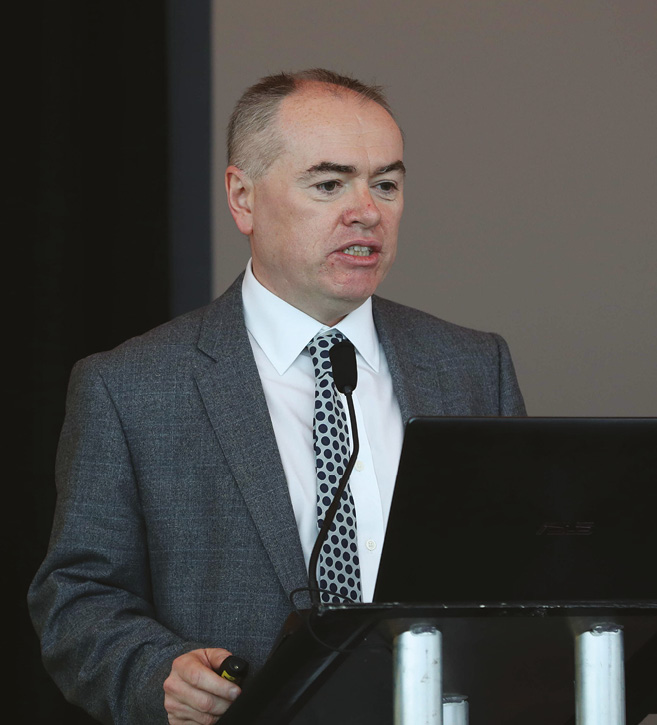Innovation in healthcare


Paul Duffy, Co-Director of IT and Telecommunications at the Belfast Health and Social Care Trust outlines some of the digital infrastructure introduced to help secure better patient outcomes.
Explaining that there is no one certain fix for healthcare, Paul Duffy believes that a drive towards improvement will be fuelled by constant, gradual innovation that will require a culture change from a previous way of working.
“Innovation in healthcare”, he states, “must not only be inbuilt into the culture of an organisation but must also be open to self-critical appraisal, ensuring that improvement is always the end goal.
“Effective appraisal must be done in a data-rich environment. This will ensure that we understand the baseline and can effectively measure whether changes have made a difference and improved patient outcomes.”
Outlining some of the recent digitally-driven innovations being conducted by the Trust, Duffy points to a transformation around neonatology transport.
“One of the greatest stresses on children is transfer, when a child is moved from one healthcare organisation to the other. This can be both physically and mentally demanding of a child and of their parents. Previously the protocol involved a senior consultant and senior nurse travelling in an ambulance with a patient during transfer, however, it was recognised that this was unsustainable given the volume of transfers being required.
“Members of the Trust’s team saw the capability within technology to place devices within the ambulance that would relieve the need for a consultant to be physically present during the transfer but would not jeopardise the care of or safety of the patient at any time.”
Duffy explains that the new way of working now allows a consultant to monitor a child in a live environment from their own workstation, increasing their time management efficiency.
A range of technologies, rather than just one, have had to be integrated to ensure the effective operation of the change. These range from the monitoring equipment, a mobile visual operator to ensure no signal is lost on a journey, WiFi installation to ensure data is being effectively fed back to hospital systems and Skype, allowing the consultant to connect with the travelling staff.
Duffy adds that the new way of working has been widely lauded for increasing efficiency. However, he reiterates that not all innovations need to be something completely new.

“Innovation can come in various forms and in many cases, will mean taking an existing product and utilising them in a healthcare environment to deliver more successful and effective outcomes.”
One example Duffy illustrates is the use of Office 365 to detether a consultant from a desktop. Allowing them to have access to critical information in a mobile format. Information mobility has also played a major role in improving the connections between senior health officials and academic institutions.
Duffy also points to the introduction of a suite of digital apps for better task management for nurses and clerical staff, as one of the most successful digital innovations introduced by the Trust. Originally designed to be integrated as an enhanced bed management system and to move staff away from solely paper-based records, the suite of apps has evolved and has helped deliver better efficiency throughout, ranging from discharge delays, treatment pathway definition, referral and reducing admissions.
Future
The move is the first step towards a fully integrated electronic medical record and Duffy explains that until such time the Trust will continue to augment the digitisation of care currently being offered.
“Mobility is a key focus and we are seeking to move away from desktops on the wards to personalise the information nurses have access to. This isn’t a switch that can be done overnight, we have to ensure that it is done in a way that is recognisable and includes buy-in from nurses.”
Duffy believes ensuring this smooth transition will open up greater opportunities to increase the digital capability of the Trust’s staff but in a manageable way. One example he points to is the further rollout of asset tracking through Radio-Frequency Identification (RFID), a scheme that is currently being carried out in the Royal Victoria Hospital successfully.
He concludes: “We’re also doing some work around utilising RFID to manage stock that has a life expectancy more efficiently. As well as ensuring that we can get it to the point of need quickly, we are also noticing a dramatically reduced spend. We now have a 100 per cent accuracy on stock that we never had before and are able to control what we are buying for better outcomes. It also means that clinical time is being saved and relocated into patient care.”





